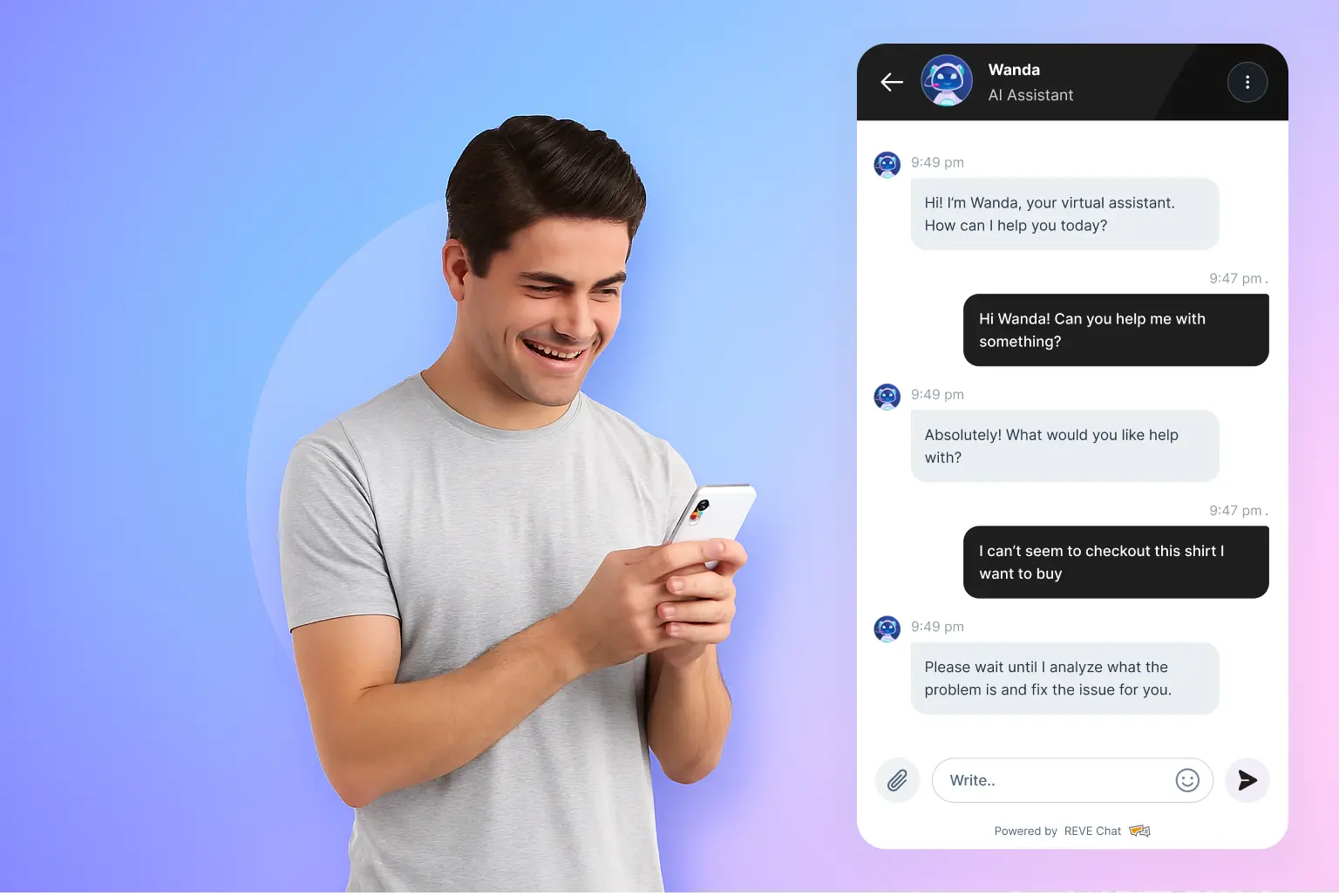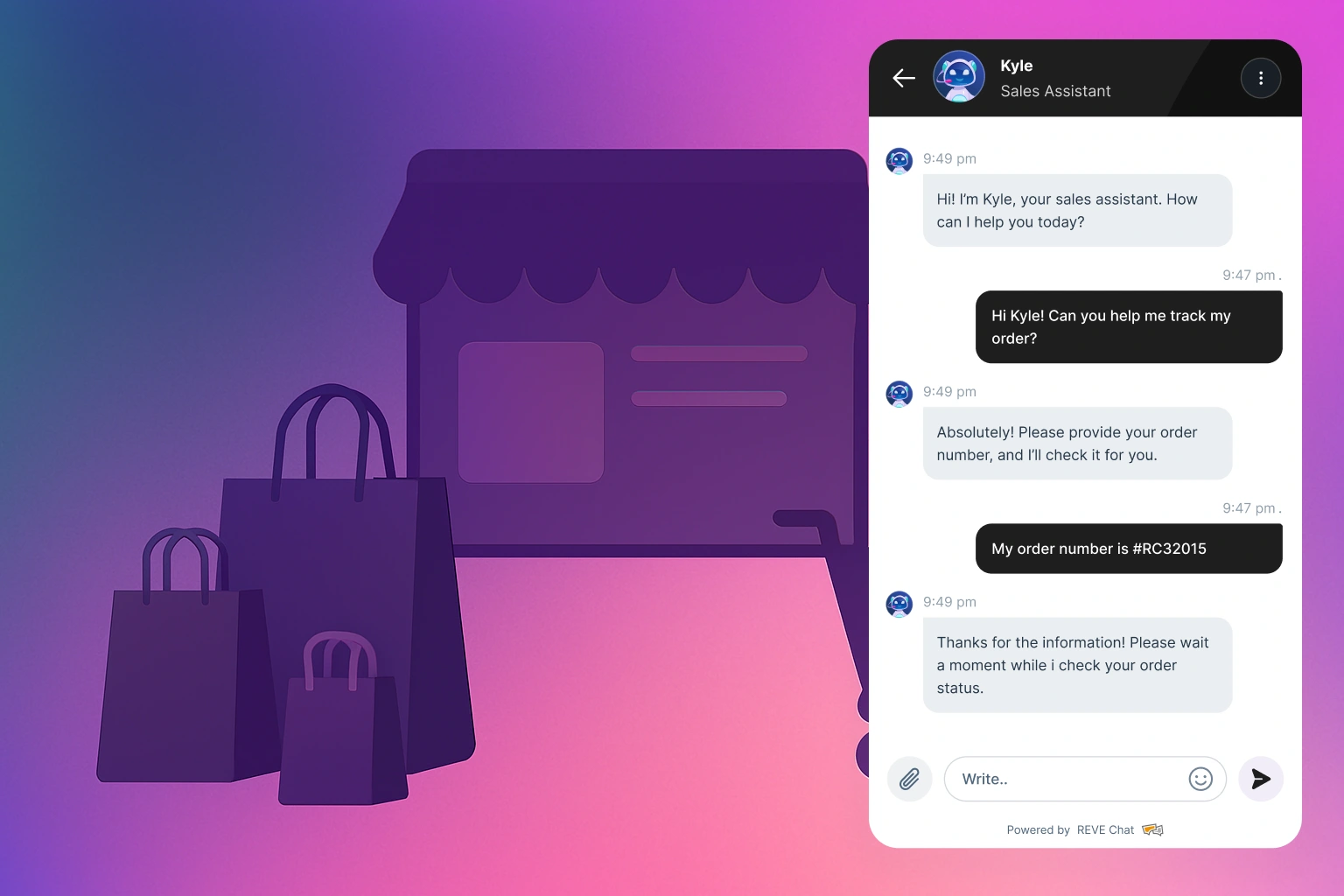AI Agent vs Chatbot: What’s The Major Difference?
- January 22, 2025
- 7 mins read
- Listen

AI agent and chatbots are changing the way businesses connect with their audiences. But what sets them apart, and which is right for your needs?
Making the right choice can transform your workflows and customer experience, while an unsuitable one can lead to inefficiency and wasted resources.
This blog dives into the AI Agent vs Chatbot, exploring their unique capabilities, key differences, and which solution best suits your needs. Let’s help you make an informed decision.
What Is an AI Agent?
An AI agent is an advanced, intelligent system designed to perform tasks autonomously by analyzing data, understanding context, and making decisions in real time. Unlike a traditional tool, an AI agent learns to adapt proactively to find solutions. They are, therefore, invaluable tools for increasing efficiency and user experience.
Think of a virtual personal assistant, like Siri or Alexa. You ask it to book a flight, and it doesn’t just follow your command—it analyzes available flights, compares prices, checks your preferences, and completes the booking for you.
It goes beyond simple commands, understanding your needs, and handling the entire process independently.
This ability to work smarter, not harder, makes AI Agents valuable in both personal and business settings. From managing customer inquiries to automating complex workflows, AI Agents are designed to make life easier and more efficient.
What is a Chatbot?
A Chatbot is a software application designed to simulate conversations with users, typically through text or voice. It works by following predefined scripts or using AI to understand and respond to user queries in real time.
Unlike AI agents, chatbots are usually task-specific and focus on handling simple interactions like answering FAQs, guiding customers, or providing support.
Think of a live chat window on an eCommerce website. When you ask, “Where’s my order?” the chatbot retrieves your tracking details and provides an update instantly. If the query gets too complex, it might escalate the issue to a human agent.
Key Differences Between AI Agent and Chatbot
|
Aspect |
Chatbot |
AI Agent |
|
Definition |
A software program designed for task-specific interactions. |
Intelligent systems capable of autonomous decision-making and complex task execution. |
|
Intelligence |
Predefined scripts, Machine Learning, and NLP capabilities. |
Advanced AI, NLP, Machine Learning, and LLM capabilities for decision-making. |
|
Learning Capabilities |
Requires manual updates for new scenarios. |
Learns from data and adapts to changing inputs with advanced reasoning and contextual learning capabilities. |
|
Autonomy |
Active; responds to user input but cannot act independently. |
Proactive; takes independent actions and predicts user needs. |
|
Personalization |
Simple customizations like usernames or preferences. |
Highly personalized interactions based on user behavior and data analysis. |
|
Task Complexity |
Suitable for single, straightforward tasks like FAQs or lead generation. |
Capable of managing multi-step, complex workflows and processes. |
|
Integration |
Easy to integrate into websites, apps, and social media for front-facing interactions. |
Seamlessly integrates with multiple systems for backend and customer-facing tasks, accessing extensive information. |
|
Use Cases |
Customer support, FAQs, appointment scheduling, lead generation. |
Advanced customer support, process automation, data-driven decision-making, multitasking, and predictive tasks. |
|
Maintenance |
Requires regular manual updates for scalability and evolving needs. |
Self-improving with minimal intervention scales effectively. |
|
Cost |
Generally more affordable and easier to implement. |
Higher initial cost but delivers more long-term value and efficiency. |
|
Best For |
Ideal for businesses with straightforward tasks. |
Businesses with complex needs and a focus on long-term automation, growth, and multi-tasking. |
While both AI Agents and Chatbots play significant roles in automating customer interactions and tasks, their core differences lie in their functionality, intelligence, and versatility. Let’s break down these differences in detail.
Intelligence and Learning Capabilities
Chatbots: Chatbots typically follow pre-set rules and scripts to interact with users. Some advanced chatbots use Natural Language Processing (NLP) to understand user intent, but their learning abilities depend on specific scenarios.
Example: A chatbot on a banking website can guide users to check account balances or apply for loans based on predefined questions.
AI Agents: AI Agents leverage Machine Learning (ML) and Artificial Intelligence (AI) to analyze data, learn patterns, make decisions, and improve over time. They can handle complex tasks by adapting to new information without explicit programming.
Example: An AI Agent can identify fraudulent transactions by analyzing user behavior and dynamically refining its detection algorithms.
Autonomous Decision-Making
Chatbots: Chatbots are reactive—they provide responses based on user inputs, but cannot make decisions. Their functionality depends on their pre-programmed workflows.
Example: A chatbot might suggest products on an eCommerce site, but won’t decide on stock replenishment or pricing.
AI Agents: AI Agents excel in proactive and autonomous decision-making. They analyze data, predict outcomes, and take actions without human intervention.
Example: A virtual sales assistant AI Agent can identify sales opportunities, recommend targeted campaigns, and autonomously launch them.
Task Completion Capabilities
Chatbots: Designed for specific tasks, chatbots shine in areas like customer support, FAQs, and appointment scheduling. However, they struggle with tasks requiring contextual understanding or multi-step processes.
Example: A chatbot can book a hotel room if the options are predefined, but it won’t dynamically suggest alternatives based on user feedback.
AI Agents: AI Agents handle end-to-end processes with ease. They can coordinate between systems, execute complex workflows, and adjust dynamically to meet goals.
Example: An AI Agent managing supply chain logistics can monitor inventory, predict shortages, and place orders—all autonomously.
Adaptability and Personalization
Chatbots: Chatbots offer personalization tailored to specific tasks. While they can recognize repeat users and tailor responses to some extent, their adaptability is constrained by predefined rules.
Example: A chatbot might greet returning customers by name, but won’t dynamically change its tone or recommendations.
AI Agents: AI Agents provide highly adaptive and personalized experiences. They learn user preferences, analyze real-time behavior, and adjust their approach dynamically.
Example: A fitness AI Agent can create personalized workout plans by analyzing a user’s past performance, preferences, and goals.
Integration and Use Cases
Chatbots: Chatbots are easy to integrate into platforms like websites or social media. Their use cases are often customer-facing and include lead generation, support, and marketing.
Example: A chatbot on Facebook Messenger answers customer inquiries about a brand’s products.
AI Agents: AI Agents integrate across multiple systems, making them versatile for backend and customer-facing tasks. They are used in areas like supply chain automation, financial forecasting, and advanced customer support. Example: An AI Agent in HR can automate recruitment by screening resumes, scheduling interviews, and sending follow-ups.
Maintenance and Scalability
Chatbots: Maintaining chatbots involves updating scripts and workflows, which can become tedious for complex use cases. They may not scale well as user demands evolve.
Example: Adding support for new languages in a chatbot may require significant reprogramming.
AI Agents: AI Agents are inherently scalable and adaptive. They require regular monitoring and data inputs but can evolve with changing business needs without extensive reprogramming.
Example: An AI Agent managing customer queries can automatically learn and handle new topics as the business grows.
AI Agent vs Chatbot: Which Is Right for Your Business?
Both AI Agents and Chatbots have their unique advantages, making the choice highly dependent on your business needs. Chatbots excel in handling focused and straightforward tasks, such as answering FAQs, managing simple customer queries, or generating leads. They are cost-effective and ideal for businesses with some specific automation requirements.
On the other hand, AI Agents are designed for advanced functionality. They can handle multiple tasks, manage complex workflows, and adapt to changing demands with ease. Their ability to deliver personalized customer experiences and data-driven decision-making makes them suitable for businesses with more intricate needs.
Ultimately, the decision between a chatbot and an AI Agent comes down to the complexity of your operations, your goals, and the level of automation your business requires.
Conclusion
The choice between AI Agents and Chatbots is not a technological decision but a strategic one, since it might shape the future of your business. Chatbots are ideal for automating simple processes and providing quick wins, thus being perfect for businesses on a budget.
AI Agents, on their part, offer unparalleled intelligence, adaptability, and scalability, empowering businesses to solve complex problems, deliver hyper-personalized experiences, and future-proof their operations.
It is now at this point important to know the core differences and align those with your business goals. A proper solution not only increases productivity but also makes customer interactions meaningful toward growth, loyalty, and competitive advantage.
Frequently Asked Questions
Chatbots rely on predefined scripts and manually created conversation paths, while AI agents utilize advanced technologies like generative AI, LLMs, and NLP to understand, engage with, and address customer queries intelligently and efficiently.
No, a chatbot cannot function as an AI Agent. While chatbots depend on predefined scripts, AI Agents possess learning capabilities and autonomous decision-making, making them far more versatile and intelligent.
Chatbots are more cost-effective upfront, offering quick and affordable solutions for customer needs. However, AI Agents provide greater long-term value by automating complex processes and reducing operational costs over time.
AI Agents can benefit small businesses with complex needs and growth-focused goals, but their higher cost may be a barrier. For smaller budgets and simpler tasks, chatbots are a more practical and effective choice.




